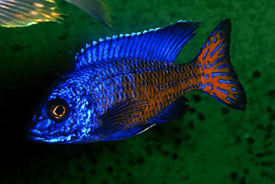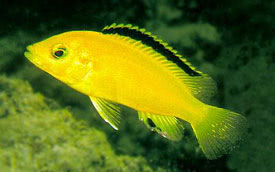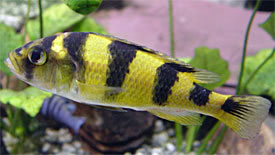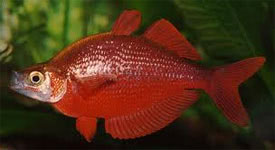Thiara cancellata - Hairy Snail
 Magyarul / Hungarian
Magyarul / Hungarian

 Magyarul / Hungarian
Magyarul / Hungarian




- Scientific name: Thiara cancellata
- Synonyms: Melania setosa (Swainson, 1824)
- Common name: Hairy Snail
- Group: Invertebrates
- Distribution: Southeast Asia; on the island of Bohol in the Philippines
- Size: 2,5 cm
- Biotope: Found in shallow rivers and estuaries. Endemic to freshwater and brackish habitats, and like some water-movements.
- Social behavior: Peaceful, can be kept with other species. Mostly nocturnal snail.
- Diet: Omnivorous; In nature they feed on decaying vegetation and algae, in the aquarium they eat all kinds of fishfoods and plant matter.
- Breeding: Not possible in freshwater.
- Tank: Minimum 30 litres
- Population: 4-5 snail for 30 litres
- Decoration: Densely planted aquarium with river sand bottom.
- Temperature: 22-26 °C
- pH: 7.2-8.2
- Hardness: 10.0-25.0 dGH
- Lifespan: 2-5 years
Description: The Hairy Snail has an unusual-look with delicate, rear-facing, needle-like protrusions on the shell. The body of the snail is light brown or reddish-brown. When at rest, they usually bury themselves into a soft substrate, so a layer of fine aquatic sand on the bottom of the aquarium is preferable to gravel, as it will protect the fragile periostracum spikes. These snails are great algae eaters and they can be a good choice in planted tanks, however they might eat soft-leaved plants if other food sources are scarce. The water should be moderately hard and alkaline to allow for healthy shell development, because in softer water, where the calcium concentration will be lower, the snails will be very prone deterioration of the shell. Their aquarium must be covered, as they are excellent escape artists, but it is best to maintain a water line slightly lower than the lid to allow them to move in and out of the water. Be very careful when handling these snails as the long, thin spines can pierce the skin.
These snails are not hermaphrodites and there are no obvious external differences between sexes.
Hairy Snails are unable to breed in freshwater conditions, which can be a blessing to some as they will not over-populate the tank. It is a livebearer snail, however it does not bear fully developed young, but releases free-floating larvae into the water and they require full marine conditions to develop through their complex stages.
Sources:
https://www.fishkeeper.co.uk/help-and-advice/freshwater/miscellaneous/hairy-snail
http://www.marinespecies.org/aphia.php?p=taxdetails&id=1304942
https://www.garnelio.de/haarige-turmdeckelschnecke-thiara-cancellata
https://www.fishkeeper.co.uk/help-and-advice/freshwater/miscellaneous/hairy-snail
http://www.marinespecies.org/aphia.php?p=taxdetails&id=1304942
https://www.garnelio.de/haarige-turmdeckelschnecke-thiara-cancellata
Hasonló vízparamétereket igénylő fajok



















